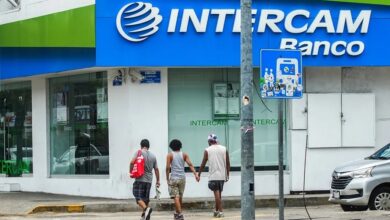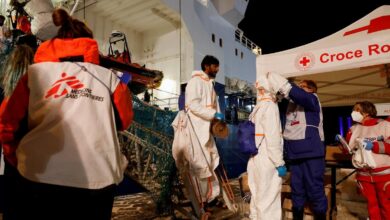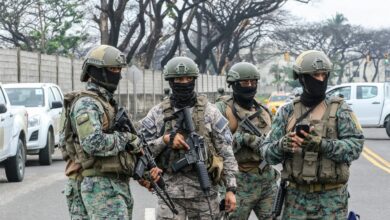Ukraine: This is the Wear and Tear of the Russo-Ukrainian War After 16 Months of Conflict
The "war of attrition" caused both Russia and Ukraine to remain in a constant state of progress and setbacks affecting primarily the civilian population and the environment.

Photo: Pexels
LatinAmerican Post | Christopher Ramírez Hernández
Escucha este artículo
Leer en español: Ucrania: así es el desgaste de la guerra ruso-ucraniana tras 16 meses de conflicto
"Kyiv claims to have recovered seven villages in its counteroffensive" or "Russia continues shelling cities and denounces an air attack in Crimea" are some of the headlines with which the war between Ukraine and Russia is addressed. Sixteen months ago, Russia decided to invade the neighboring country, which left (up to last February 24, a year after the invasion) more than 7,000 civilians dead, according to the United Nations.
For its part, the Ukrainian government claims that military casualties are between 150 and 153 thousand, of which 13 thousand are Ukrainian soldiers and 140 thousand are Russian soldiers.
However, beyond the figures that sometimes dehumanize the concept of war, it is worth discussing a little issue: the attrition brought about by this conflict.
Both leaders behind the front lines and international organizations claim that the Russian invasion of Ukraine turned into a seesaw of emotions. The Kremlin's initial plan to seize Ukrainian territory "with ease" was overshadowed by a fierce defense by the Armed Forces led by President Volodymir Zelensky.
"Preparations on the part of Russia for a protracted war signify the enemy's realization that its plan for rapid conquest of Ukraine is not realizable. That is why Russian President Vladimir Putin now values a long war of attrition," Ukrainian military intelligence said earlier this year.
A Déjà Vu of the First World War
Now, the "war of attrition" does not show a clear winner for now, significantly when, as defined by the famous Argentine chronicler Julián Varsavsky, the battles were reduced (so to speak) to a déjà vu of the First World War with the trenches as protagonists.
According to the renowned expert in the history of Russia and Ukraine, Jorge Wozniak, the ongoing conflict between the two countries leads to a "tactical return" of the once known as the 'Great War' in which both Russia and Ukraine have access to similar technologies (precision artillery and drones). This detonated into a clash with constant advances and setbacks, with no apparent advantage on either front.
Wozniak stresses that tanks became vulnerable targets, as seen in the Russian forces' entry into Kyiv. Videos show how rockets hit tanks, which prompted the Russians to change their breakthrough strategy. Now, they seek to lure the Ukrainians into areas where they can wear them down with their overwhelming artillery, maintaining a 10-to-1 asymmetry.
Thus, the Russian strategy is based on generating attrition and constant casualties, an aspect that leaves the Ukrainians with only one way of supplies and escape. The Russians refrain from taking certain localities to avoid exposing themselves and concentrate their efforts on favorable positions where they can raze their opponents from afar.
As for Ukraine, the advantages lie in its knowledge of the terrain and in having civilian fighters who can take up arms and confront the Russian invaders. However, this constant psychological stress also wears down the Ukrainians.
Russia Against the Rest of the World?
Another point to consider that helped Ukraine make attrition a powerful ally against Russia is the international aid it received from international organizations, especially the North Atlantic Treaty Organization (NATO).
the head of this world entity, Jens Stoltenberg, clearly mentioned that since this war is "a battle of attrition," the next step in the crisis is to move on to "a war of logistics."
"I think sometimes we underestimate all the logistics that have to be in place for the battle tanks to have operational capability, so maybe it's a little more boring, but the logistics are essential," he said.
In that sense, the logistics that Ukraine received from significant powers such as the United States, Germany, or the United Kingdom was not little, and it was a strategy that helped Zelenski's government and his troops to stay afloat and counteract the constant Russian attacks.
Of course, this help (necessary), rather than giving the light of triumph for Ukraine, only fuels Russia's anger more; it even validates the thought with which the Russians started the invasion of Ukrainian territory: the alleged annexation of Ukraine to NATO.
This was made known by Kremlin spokesman Dmitry Peskov, who accused NATO of trying to absorb and drag Ukraine into the alliance, thus backing Russia's decision to carry out the operation to ensure its security.
For its part, the Russian Foreign Ministry stated that NATO's actions in Ukraine "confirms its direct involvement in the conflict and the planning of military operations."
Experts point out that there is a need for favorable conditions for opening negotiations between the two countries, as neither is willing to give in. The war continues without respite, leaving the region in unexpected trench warfare in the post-modern era.
It may interest you: Ukraine Shows Us What Conflicts Will Be Like in a Multipolar World
Environmental Wear and Tear
Finally, it is essential to note that "the war of attrition" kills not only the human forces behind the armies but also nature. Environmental wear and tear.
Several experts warn about the environmental impact of the war on protected areas such as the Sviati Hora national park, where the attacks triggered severe fires.
In addition, intensive artillery and the shelling of factories and military equipment release toxic materials, such as asbestos, while the affected sewage systems worsen living conditions in eastern Ukrainian cities. Thus, the environmental dimension of this war is becoming increasingly evident, affecting both the land and the health of the population.




